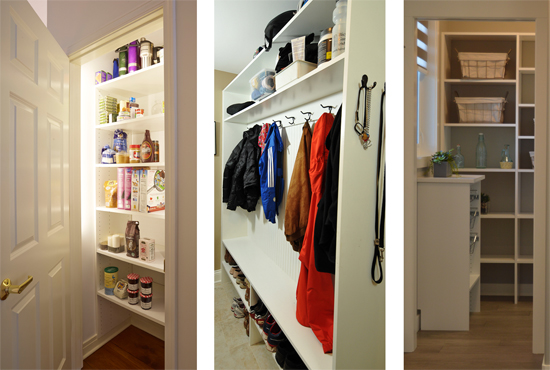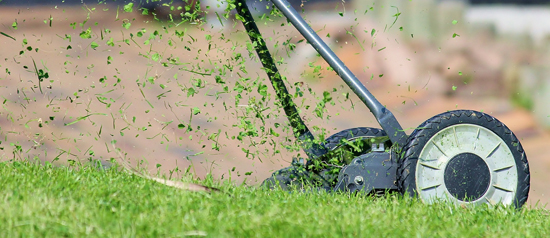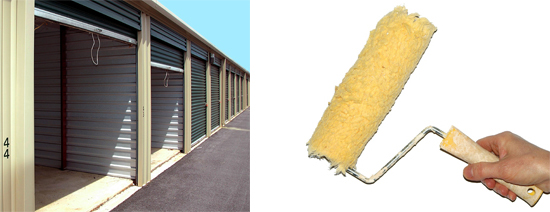If you have a home to sell, you’re likely anxious to get a good offer in a quick timeframe. We’ve collected some expert staging tips to help present a home that buyers will fall in love with at first sight.
Scott Rose of Baird & Warner, tells sellers to shine the apple! Scott says, “We are in a price war and a beauty contest. Declutter and make it look like a model. Remember that in most cases a home is worth what a buyer is willing to pay for it and what a bank is willing to loan (unless it’s all cash!).” (You can email Scott at [email protected], visit his website at ScottRoseHomes.com, or @ScottRoseHomes on Facebook.)
The beauty contest starts with curb appeal. First impressions are CRUCIAL. Many buyers will opt out of doing a walk-through on a house based simply on a poor outside presentation, so start your staging process at the curb. Replace your old mailbox with a pretty new one. Cut the grass, trim the bushes, weed flower beds, and add fresh mulch. Power wash your decks, walks, and patios. Repaint your front door (according to this 2017 Zillow report, homes with navy blue, dark gray, or charcoal front doors sell for more money) and add large, attractive house numbers that can be clearly seen from the street and look welcoming. If you need to paint the siding, consider gray, brown, or greige, as suggested by Zillow. If paint isn’t necessary, wash the siding and the windows until they sparkle. Clean your front porch and add welcoming touches like seasonal flowers in planters and hanging baskets, a pretty doormat, and a new doorbell with attractive sound.
The first step to staging the interior of your home for sale is to clean, clean, clean. Spit shine every single surface, corner, wall, ceiling, and floor. Clean cabinets and drawers, inside and out. Clean the grout, the faucets, and the globes on light fixtures. Clean furniture even though it won’t stay with the home, and clean underneath it too. Consider hiring a professional cleaning service to handle this time-consuming, exhausting chore for you.
Next, de-clutter, de-personalize, and paint. Experts suggest that you rent a storage unit and pack and move a good deal of your belongings before your first showing. Now is the time to get serious about removing every trace of clutter, and absolutely DO NOT shove that clutter into cabinets and closets. Potential buyers will be looking in there! Remove ALL personal photographs, diplomas, memorabilia, and collectibles. Choose only a few, neutral decorative elements. Remember, you want potential buyers to visualize themselves in your home. If they can’t see past your style and your décor, they won’t be able to see themselves in the space. Aim for lived-in but neutral. Have your realtor help you pick a few key pieces of furniture and store the rest. Give all the walls and trim a fresh coat of paint at minimum (and perhaps cabinets too if needed). Refer to the Zillow report and our pinterest board Colors That Sell for suggestions on paint colors for specific rooms.
Next, tackle every closet, cabinet, pantry, bookcase and storage area. Any items you don’t need to store for your next home can be picked up by a junk hauling specialists. There are several. One I like and use is Junk King. Storage is a big selling point so you want to be sure you show your home’s storage to best advantage. Keep a few, carefully chosen items in each storage area in an organized, attractive arrangement. Leave lots of “white space” between items. Consider items like fancy jams and other upscale condiments in pretty packaging to display on shelves.
Even if they are tiny, your pets definitely qualify under “the big stuff” in home prep. You need to remove any hint of any animal from your home. You don’t want potential buyers thinking about all the hidden damage your adorable fur babies might have caused to your home. Remove all furniture and rugs with pet damage, and all trace of pet odors and pet fur (or feathers or scales). When you leave before a viewing, take your pets and all their gear with you. Don’t leave pet dishes, pet beds, or pet toys behind to make potential buyers think of potential problems.
Stay tuned next week for Part 2: The Details, where we will talk about what works (and doesn’t) for each room.





